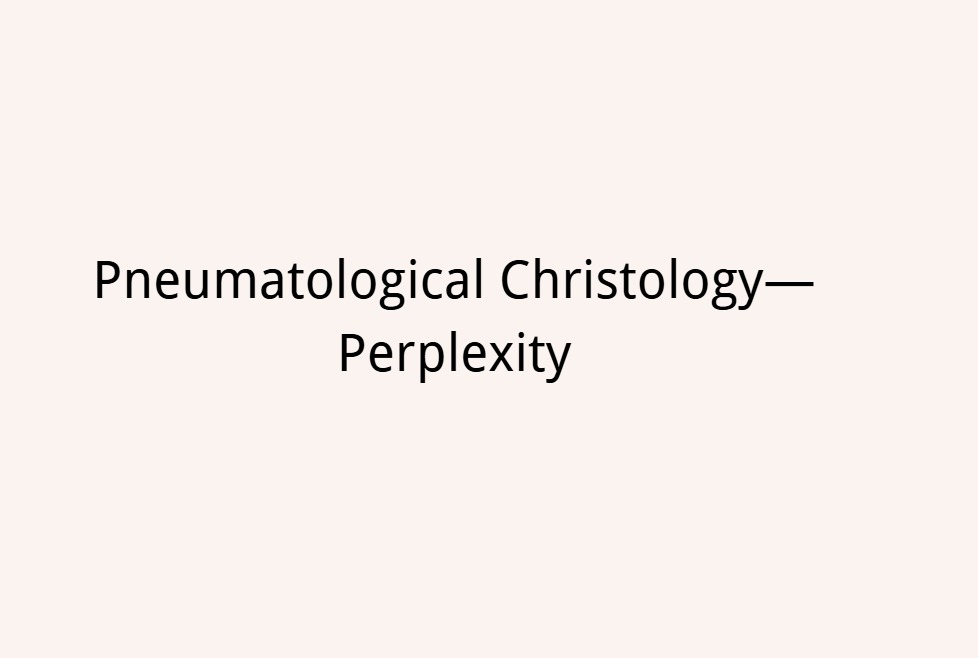Pneumatological Christology
**Pneumatological Christology** represents a theological approach that emphasizes the Holy Spirit’s constitutive role in understanding Christ’s identity, work, and ongoing presence. Rather than viewing the Spirit as merely assisting or empowering Christ, this approach argues that the Spirit fundamentally constitutes who Christ is and how Christ functions in salvation history.
## Core Theological Principles
### The Spirit as Constitutive of Christ’s Identity
In pneumatological Christology, **the Holy Spirit doesn’t simply help Christ but actually makes Christ to be who he is**. This builds on the biblical witness that Christ was conceived by the Spirit (Matthew 1:20; Luke 1:35), anointed by the Spirit at his baptism (Luke 4:18-19), and empowered throughout his ministry by the Spirit. The very title “Christ” (Christos = “Anointed One”) indicates that Jesus’ messianic identity is pneumatologically constituted.
As John Zizioulas emphasizes, there is **”no priority of Christ in relation to the Spirit; both are co-founders of the Church and they ‘co-institute’ the Church”**. This challenges traditional approaches that subordinate pneumatology to Christology, arguing instead for their fundamental interdependence.
### Relational Rather Than Functional Understanding
Pneumatological Christology moves beyond viewing the Spirit as an **impersonal force or power** that Christ employs. Instead, it understands the Spirit as a divine person who enters into such intimate relationship with Christ that Christ’s very identity becomes relational and pneumatologically grounded.
This connects to broader themes of **relational ontology**, where persons are understood to exist in and through communion rather than as isolated individuals. Christ exists as the perfect embodiment of person-in-communion, with the Spirit being integral to that communal identity.
## Biblical and Theological Foundations
### The “Spirit Was Not Yet” Principle
Building on John 7:39 (“the Spirit was not yet, because Jesus was not yet glorified”), pneumatological Christology recognizes that **Christ’s glorification fundamentally transforms the Spirit’s ministry**. The post-Pentecost Spirit is not merely the pre-incarnation Spirit of God but represents something qualitatively new: the Spirit of the glorified Jesus who now contains both divine and human elements.
### Eschatological Dimension
The Spirit brings **”the last days into history”** (Acts 2:17-18), making Christ an eschatological being who exists simultaneously in present history and ultimate future. Through pneumatological constitution, Christ becomes “the last Adam” (1 Corinthians 15:45), representing the new humanity that will characterize the eschaton.
## Contemporary Theological Applications
### Integration of Divine and Human Natures
Pneumatological Christology offers fresh perspectives on **how Christ’s divine and human natures relate**. Rather than viewing these as two separate substances somehow combined, this approach understands the Spirit as the agent who enables divine-human unity in Christ’s person. The Spirit makes possible what traditional Christology has struggled to explain: how one person can be fully divine and fully human.
### Church as Pneumatological Extension
Since the Spirit constitutes Christ’s identity, the Church’s identity is also **pneumatologically grounded**. The same Spirit who made Jesus the Christ continues to make the Church Christ’s body in the world. This creates what Zizioulas calls “an everlasting Pentecost event” where the institutional becomes charismatic and the charismatic becomes institutional.
### Transformative Soteriology
This approach emphasizes that salvation involves **participation in Christ’s pneumatologically constituted life** rather than merely receiving benefits from his work. Through the Spirit, believers don’t just receive forgiveness but actually participate in the divine-human communion that characterizes Christ’s own existence.
## Methodological Implications
### Beyond Christomonism
Pneumatological Christology challenges **Christomonistic tendencies** that minimize the Spirit’s role in theology. It argues that “Christology is either pneumatological or it is no Christology at all,” requiring systematic theology to give equal weight to both christological and pneumatological considerations.
### Biblical Hermeneutics
This approach influences **biblical interpretation** by recognizing the Spirit’s active role not only in inspiration but in making Christ present to readers. Scripture interpretation becomes pneumatological activity where the same Spirit who constituted Christ’s identity continues to reveal Christ through the biblical text.
## Contemporary Relevance and Debates
### Ecumenical Potential
Pneumatological Christology offers **bridges between different Christian traditions**. Eastern Orthodox emphasis on theosis, Protestant focus on personal relationship with Christ, and Catholic sacramental theology can all find common ground in pneumatological approaches that emphasize transformative participation in Christ through the Spirit.
### Theological Challenges
However, this approach raises important questions about **Trinitarian relationships**. Critics worry that emphasizing the Spirit’s constitutive role might blur the distinction between the second and third persons of the Trinity or subordinate the Spirit’s distinct personhood to Christ’s identity.
### Practical Applications
In Christian living, pneumatological Christology suggests that **spiritual maturity involves growing into the pneumatologically constituted life that characterizes Christ himself**. This moves beyond moral imitation of Jesus to participation in the Spirit-constituted communion that defines Christ’s existence.
## Conclusion
Pneumatological Christology represents a significant development in contemporary theology that addresses longstanding questions about the relationship between Christ and the Spirit. By arguing that the Spirit constitutes rather than merely assists Christ, this approach offers fresh perspectives on incarnation, salvation, church life, and Christian experience. While raising new theological questions, it provides valuable resources for understanding how divine and human realities unite in Christ and continue to be mediated through the Spirit’s ongoing work in the world.
This theological trajectory reflects broader shifts in contemporary Christianity toward more relational, experiential, and integrative approaches to understanding God’s work in the world, making it increasingly influential in systematic theology, biblical studies, and practical ministry.
Sources




